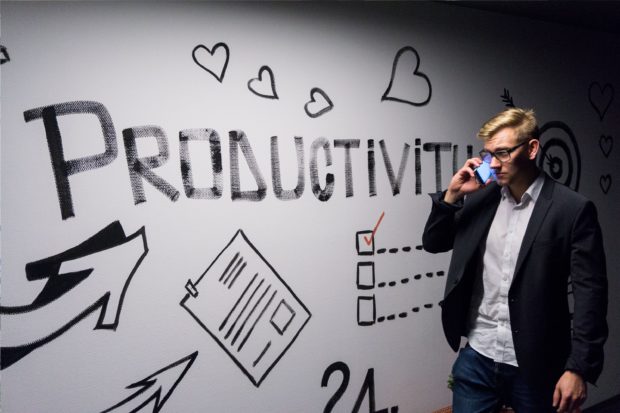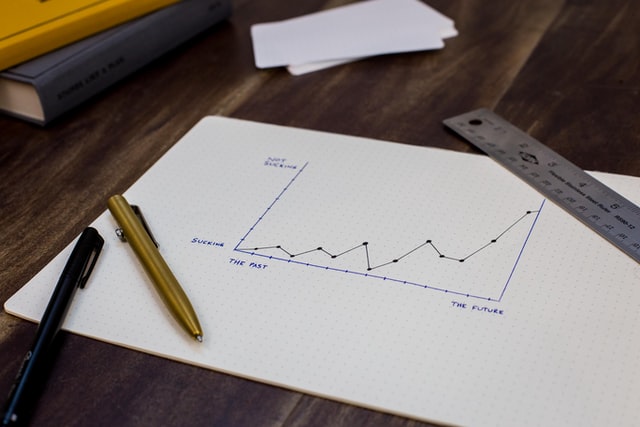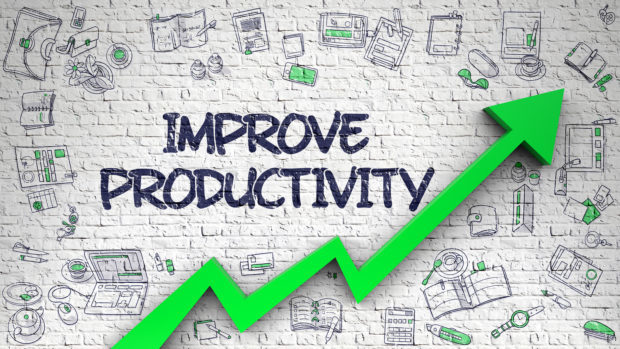7 Hacks to Making Your Office Space More Productive

There are only so many hours in a day to complete the work necessary to excel. The setup of your office space can help you be less or more productive. Cutting down on distractions and ensuring you have the best layout possible keeps you at the top of your game.
According to the United States Bureau of Labor Statistics, productivity in the last year increased 4.1% in nonfarm businesses. When compared with the hours worked, there was a total 1.1% increase in output. People are working more efficiently. Part of the reason may be those working from home having better setups.
Whether your office is in your house, or you own a business with employees, improving your space increases productivity and ensures success. Here are our favorite seven hacks to make the most of your space.
Invest in Equipment
If you aren’t comfortable while working, you’ll be far less productive. Ensure your chair is ergonomic. Make sure you can convert your desk to sitting or standing to prevent neck kinks and awkward positions.
Think about the things that make your tasks easier to complete, such as having a small printer nearby or a copy machine within a few feet. What are the things you do in a given day and how can you add tools to make those jobs more efficient?
Shine a Light on It
Lighting makes an impact on alertness and the ability to read documents. A well-lighted space can even lift someone’s mood.
One study showed a 12% increase in store sales when new lighting was introduced at a retail location. Some ways of adding more light include natural methods such as opening up window blinds. However, you can also add artificial lighting to dark areas of the building.
Reduce the added costs of installing more lights by adding automated on/off switches when someone enters the room. For example, the bathrooms might not need to have lights on 24/7. However, you can set them to flip on when an employee enters the area.
Cut the Clutter
Clutter reduces productivity. Not only do you have to navigate around the mess, but you may have a hard time finding what you need when you need it. Take the time to throw away anything you aren’t using.
Get in the habit of filing documents away as soon as you finish with them. You’ll never scramble to find a lost file again when you keep it in your file cabinets.
Are there any devices repeating what another does? For example, can you get rid of the document scanner and purchase a printer with a scanner built in? Combine any machines you can to reduce some of the extra elements in the room.

Reduce Distractions
Distractions are the biggest enemy to productivity. Interruptions come from co-workers stopping by your desk to chit-chat, noisy phone conversations and even noises such as music or ticking clocks.
What distracts one person may not bother the next. Know what your triggers are and rearrange your work space to avoid them.
For example, if the person in the cubicle next to you stops and talks for 30 minutes after lunch every day, take your lunch a little later. Ask to move your desk to another location away from the noise. You can also cut down on your personal distractions by putting away photos, your phone and any other elements taking your focus away from the task at hand.
For a week or two, take note anytime you’re distracted from your work and jot down what pulled you out of your focus. You’ll see which things need to be removed from your work space for you to be your most productive self.
Keep the Air Clean
The National Oceanic and Atmospheric Administration reported poor air quality results in $150 billion in lost revenue for companies every year with around $93 billion due to lost productivity. Some of the issues people face from lack of clean air include headaches, irritability and fatigue. Scientists point to “sick building syndrome,” stating the stale air inside many offices exacerbates the issue.
You can make your office area more conducive to health by opening the windows and letting fresh air in, replacing air filters, and even cleaning with non-toxic options. Additionally, considering carbon offsetting initiatives for your office can contribute to a broader environmental impact, helping balance the carbon footprint associated with daily operations.
Include Space for Breaks
Many experts estimate the average person is only productive a few hours a day. People need time for breaks and to step away from the task at hand or they tend to lose focus. Even if they keep plowing through the work, the quality suffers.
Include an area in your office for regular breaks. Offer cold water, coffee, snacks and places to sit. Even a short break of ten minutes or so may be enough to refresh you and let you approach your work with a fresh mindset.
Decorate for Inspiration
Think about what inspires you to push a bit harder. Post inspirational sayings you love around your house. Add quotes to the walls, or beautiful artwork. Use a color that perks everyone up, like a sunny yellow or a robin’s egg blue. Stay away from anything too soothing as it may put you and your employees to sleep.
Pay Attention to Other People’s Success
Is there another company consistently putting out more than yours? What are they doing differently with their office setup? Find a CEO not in direct competition and ask them to mentor you and help you with your office setup.
If a coworker constantly puts out ten times the work of everyone else in the office, pck their brain for how they stay so focused. What are they doing differently? How is their office space set up?
The more attention you pay to the little things in your office space, the more likely you’ll find a setup that keeps you thriving and producing even during difficult and high-stress times.
******
Eleanor Hecks is editor-in-chief at Designerly Magazine. She was the creative director at a digital marketing agency before becoming a full-time freelance designer. Eleanor lives in Philly with her husband and pup, Bear.



